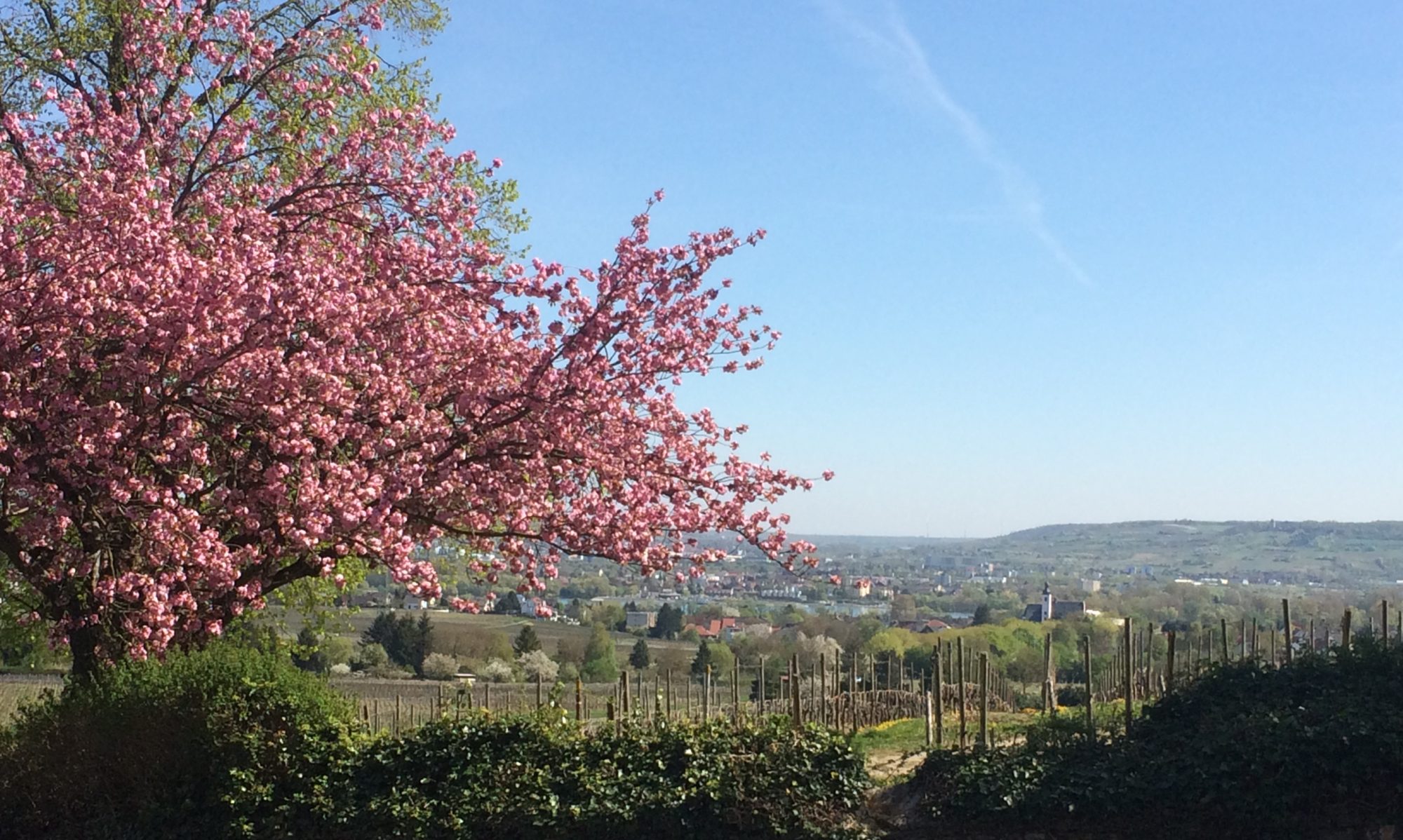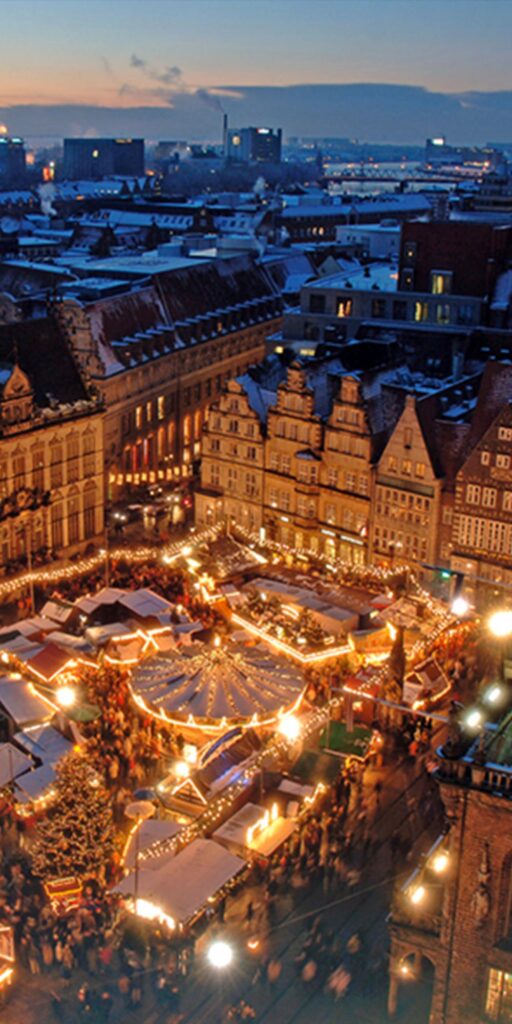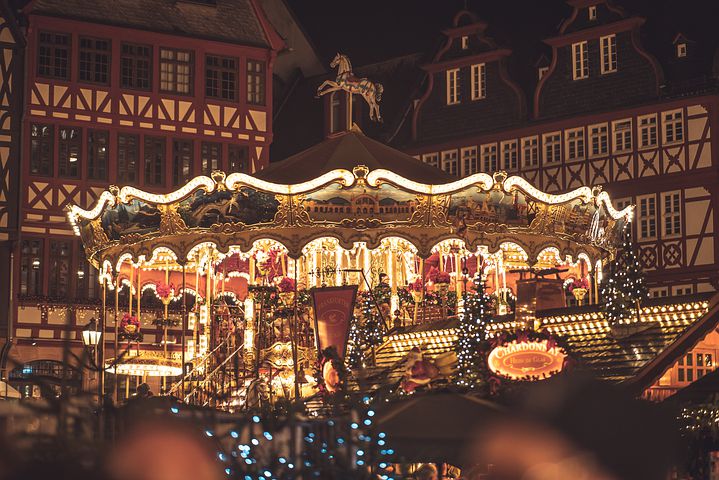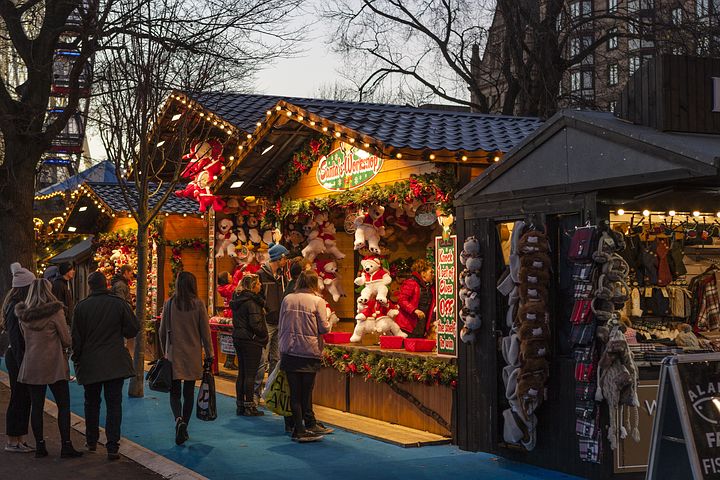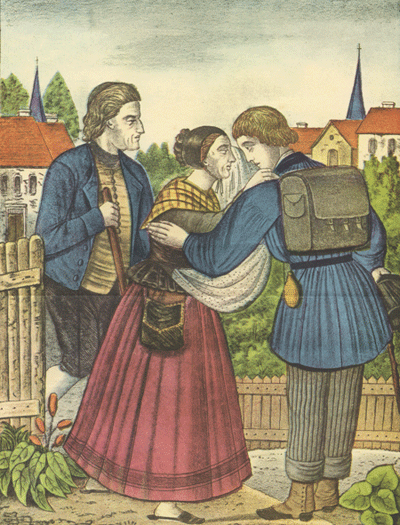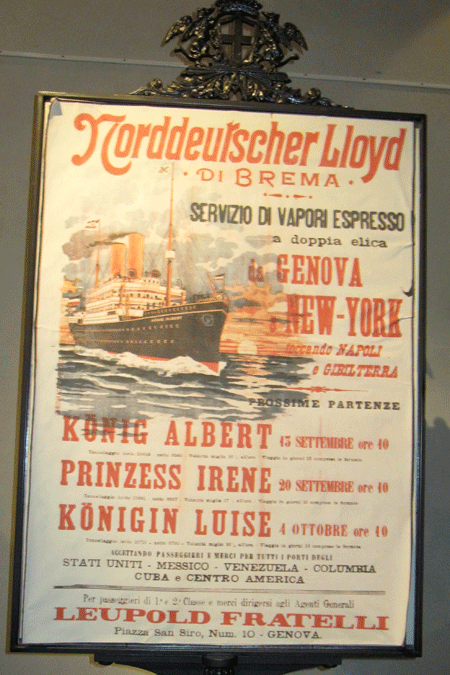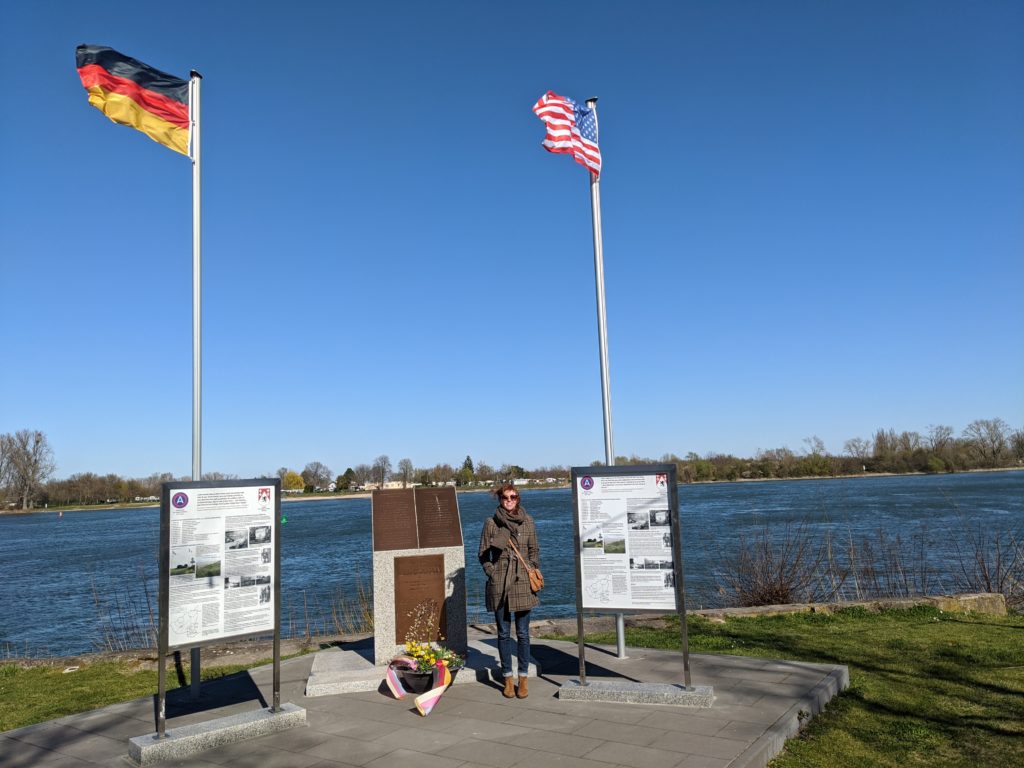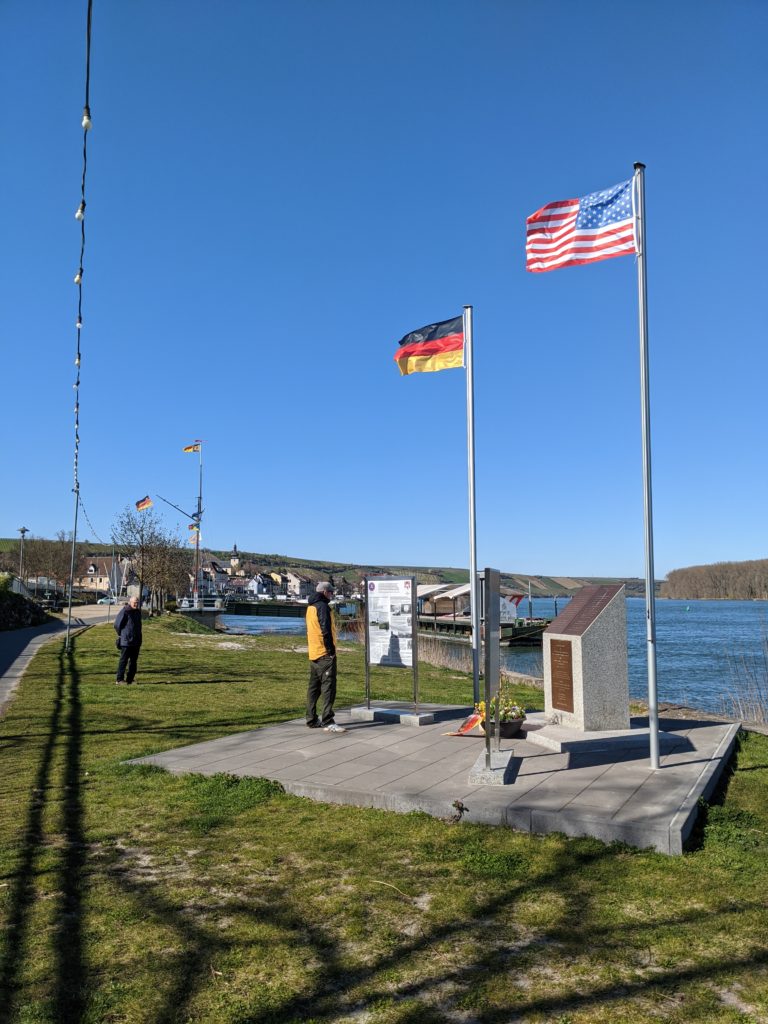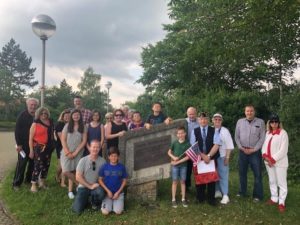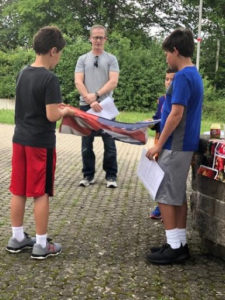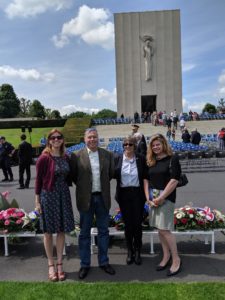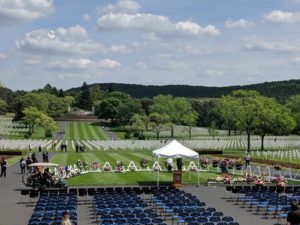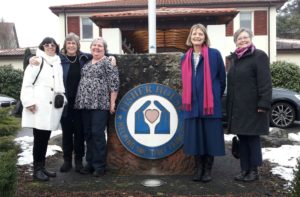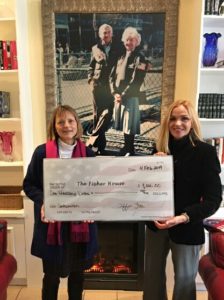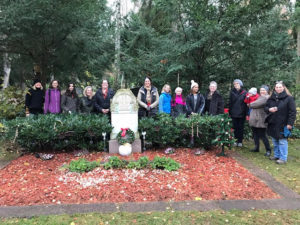Retired Army Nurse Lois Borsay Returns to Help With COVID
For the month of February, the Palatinate Chapter would like to highlight the work of one of our members, Lois Borsay, who has returned to active duty as a nurse to help in the Army clinics here on German bases.
In her own words….
‘My job is with the Army’s Public Health Department. We are responsible for 5 Army Health Clinics and a large NATO training area. Many of our soldiers are here for training from many different parts of Germany and other NATO countries. This training lasts several weeks to many months which makes quarantine and contact tracing a challenge. We are training volunteers on how to do contact tracing for those who test positive. I am located in the state of Bavaria in southern Germany. Bavaria has strict guidelines for travel, masks, quarantine and testing. I’m not doing direct patient care, but work more on policy, planning & education. It’s busy, exhausting but interesting. It’s what I’m trained to do. Our team here is excellent and I’m honored to be a small part of helping get the vaccine program organized so we can vaccinate as many as possible.
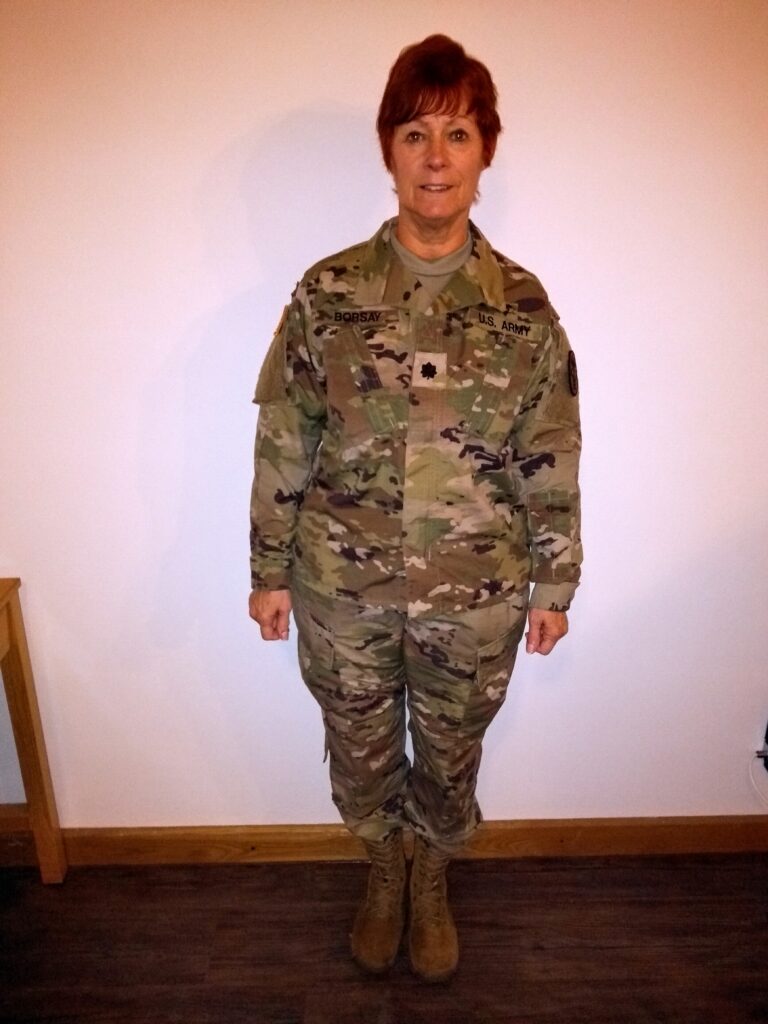
‘One of the first challenges regarding my return to AD, is this whole business of wearing a uniform again. I made a quick stop at the Army uniform store figuring I could just grab what I needed and go. However, many things have changed besides the pattern of the camouflage..it’s now called OCP ( Operational Camouflage Pattern adopted in 2015). The outfit is now called ACU (Army Combat Uniform) not the BDU (Battle Dress Uniform) I remember! I didn’t even know what to buy, much less where to put all the patches. Then there is the question of Velcro or sew-on name tapes? Who knew there are 3 different boot manufacturers! Thankfully, Dave came to my rescue. A retired nurse living in Germany, Dave works in the military clothing store to keep his base privileges. He knows his stuff & realized I needed more help than my time schedule would allow that day. He insisted I return when I had more time…much more time! He clearly saw the challenge ahead!
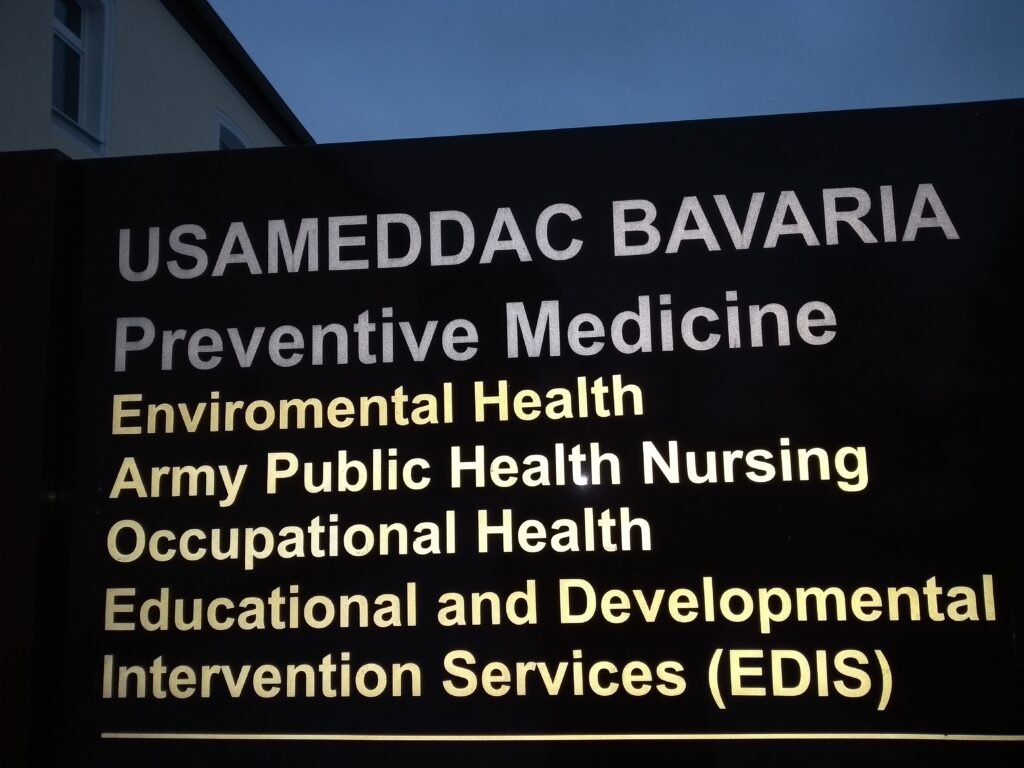
After 2 hours of being fitted & dressed like Cinderella for the camouflage ball, I left with a pair of Reebok boots, 2 package sets of T-shirts, a cover (hat), an olive skullcap made of fleece, a fleece jacket and a set of ACU’s with an assortment of patches. Dave made sure I knew where to put them and gave specific instructions on how to wash (cold water only & turned inside out), dry & hang up everything because the fabric is treated with insect repellent. At least I had all of the pieces & parts.
It was a good thing we were in lockdown mode because I looked pretty funny clomping around the house in sweat pants and brown suede combat boots in order to ‘break them in’ before I actually had to report for duty. I’m sure my DAR ancestor, COL William Nelson, is looking down from above just shaking his head!’
Good luck to Lois and many thanks from the Palatinate Daughters for your very important engagement in helping with the Corona crisis here in Germany!
